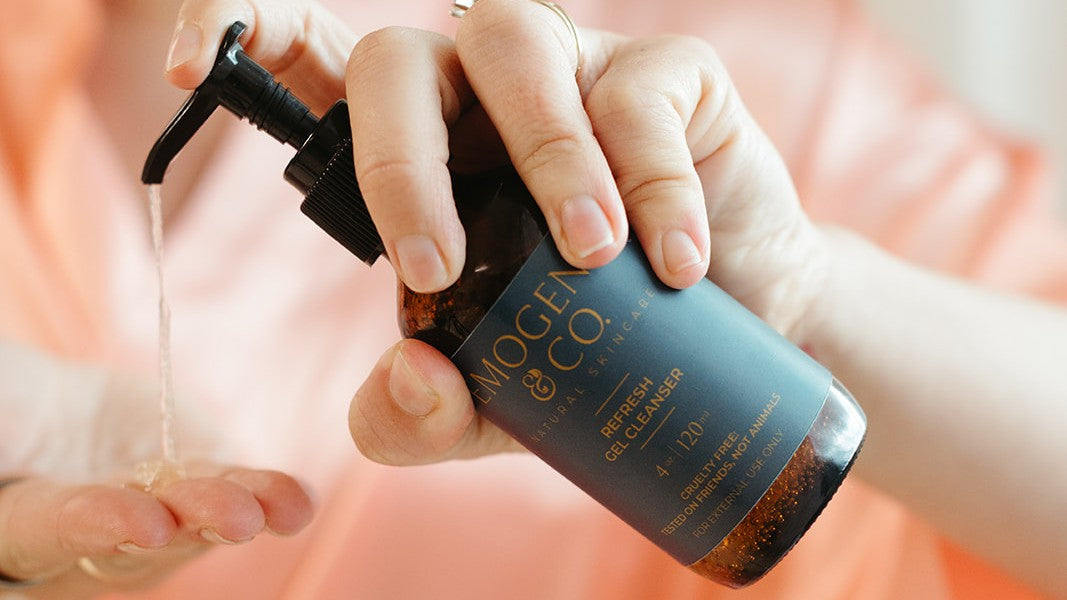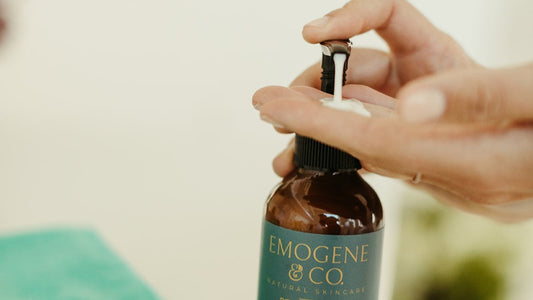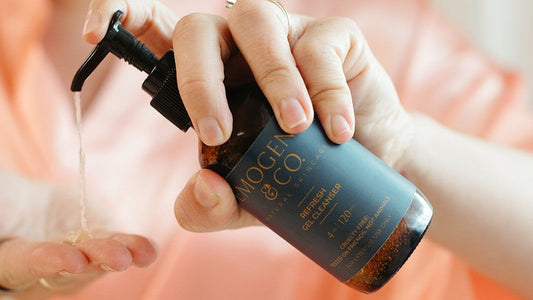Many traditional cleansers strip the skin and compromise its delicate acid mantle, especially harmful to children, those with eczema, or barrier-damaged skin. Gentle cleansers are important, especially with kids and teens. Our Ritual Foaming Milk Cleanser, Refresh Gel Cleanser, and the new Marshmallow Magic Gentle Cleanser uses amino-acid based surfactants to cleanse the skin without stripping your skin’s natural barrier.
Types of Surfactants
Surfactants are essential ingredients in cleansers, allowing water and oil to mix and remove dirt, excess oil, and impurities from the skin. Their properties include cleansing, emulsification, foaming, wetting, stabilization, dispersion and solubilization. Not all surfactants are created equal; here are the main categories found in skincare:
-
Anionic Surfactants
-
Common examples: Sodium lauryl sulfate (SLS) and sodium laureth sulfate (SLES)
-
How they work: Possess a negative charge, producing a high level of foaming and cleansing power.
-
Impact on the skin: Can be harsh, stripping natural skin oils and potentially irritating sensitive or compromised skin.
-
Best for: High-foaming, deep-cleaning applications such as body soaps, shampoos, and laundry detergents.
-
Cationic Surfactants
-
Common examples: Cetyltrimethylammonium chloride and behentrimonium chloride
-
How they work: Carry a positive charge and are primarily used for hair conditioners and some specialized facial cleansers.
-
Impact on the skin: Less common in facial care; may cause irritation if used incorrectly.
-
Best for: Conditioning agents in hair care, fabric softeners, and antimicrobial applications.
-
Nonionic Surfactants
-
Common examples: Decyl glucoside and coco-glucoside
-
How they work: Have no electrical charge, making them less irritating and ideal for more gentle formulations.
-
Impact on the skin: Typically milker and more suitable for sensitive or dry skin types.
-
Best for: Personal care products, mild cleansers, and emulsifiers in food and cosmetics.
-
Amphoteric Surfactants
-
Common examples: Cocamidopropyl betaine and sodium lauroamphoacetate
-
How they work: Can be positively or negatively charged depending on the cleanser’s pH environment.
-
Impact on the skin: Known for being gentle, often combined with other surfactants to improve mildness and cleansing efficacy.
-
Best for: Mild, skin-friendly applications like baby shampoos and facial cleansers.
Why Amino Acid-Based Surfactants?
Amino acid-based surfactants are derived from glutamic acid, glycine, or sarcosine, which are components that are identical to those found naturally on the skin. Common names you’ll find on our ingredient lists are:
-
Sodium lauroyl oat amino acids
-
These are anionic surfactants that deeply cleanse, while also hydrating the skin and reduce water loss.
-
Reduce irritation and is much less aggressive than more common anionic surfactants like SLS and SLES.
-
Sodium cocoyl apple amino acids
-
Similar to sodium lauroyl oat amino acids, these are anionic surfactants that deeply cleanse and foam without being too harsh on the surface.
-
Works well on all skin types and improves the texture of the product.
-
Sodium lauroamphoacetate
-
This is a common amphoteric surfactant and is well known for its mild and gentle nature as a cleansing agent.
-
Cocamidopropyl betaine
-
Similar to sodium lauroamphoacetate, this is a common amphoteric surfactant that is mild and gentle and effectively removes dirt, oil, and impurities from the skin and hair.
As a pharmacist, I look for surfactants that cleanse without compromising barrier integrity, and amino acid-based ones do exactly that.
What Makes Amino Acid-Based Surfactants Special?
-
Ultra-mild cleansing: These surfactants cleanse without stripping skin lipids, preserving the vital moisture barrier.
-
Biodegradable and non-irritating: They’re safe for babies and sensitive skin types, with minimal risk of allergic reactions.
-
Naturally pH-aligned: Their chemistry matches the skin’s own pH, supporting a healthy barrier.
Surfactants in Emogene and Co. Cleansers
-
Ritual Foaming Milk Cleanser
-
Surfactants used: Sodium lauroyl oat amino acids, sodium cocoyl apple amino acids, and cocamidopropyl betaine
-
This cleanser provides a creamy gentle foaming cleanse and leaves your skin thoroughly cleansed without drying and stripping your skin’s natural moisture.
-
These specific surfactants aid in deeply cleansing without irritating sensitive skin
-
This cleanser is recommended for normal, dry and sensitive skin types
-
Marshmallow Magic Gentle Cleanser
-
Surfactants used: Sodium lauroyl oat amino acids, sodium cocoyl apple amino acids, and cocamidopropyl betaine
-
This cleanser was specifically designed for children to cleanse their skin without drying and stripping their skin’s natural moisture.
-
With the same surfactants as the Ritual, you know the cleanser is gentle and will work well with most skin types.
-
Refresh Gel Cleanser
-
Surfactants used: Sodium lauroamphoacetate and cocamidopropyl betaine
-
This cleanser gently removes dirt, oil and dead skin from pores without disturbing your skin's natural moisture barrier.
-
Although also a more gentle cleanser, this one will be more focused on the effective cleansing rather than providing moisture.
-
Refresh is recommended for normal and oily skin.
Pharmacist’s Takeaway
Amino acid-based surfactants are the cornerstone of clean, effective, and gentle skin care. They are ideal for those seeking more than just cleansing, instead, offering benefits like gentle exfoliation, lasting hydration, and powerful antioxidants. They are especially recommended for children, teens, sensitive or eczema-prone skin, and anyone focused on barrier repair routines.
Let’s stop stripping the skin and start supporting it with smarter cleansing. If you’re looking for a gentler, cleaner routine, especially for your family, look for amino acid-based cleansers with added enzymes and moisturizers.




